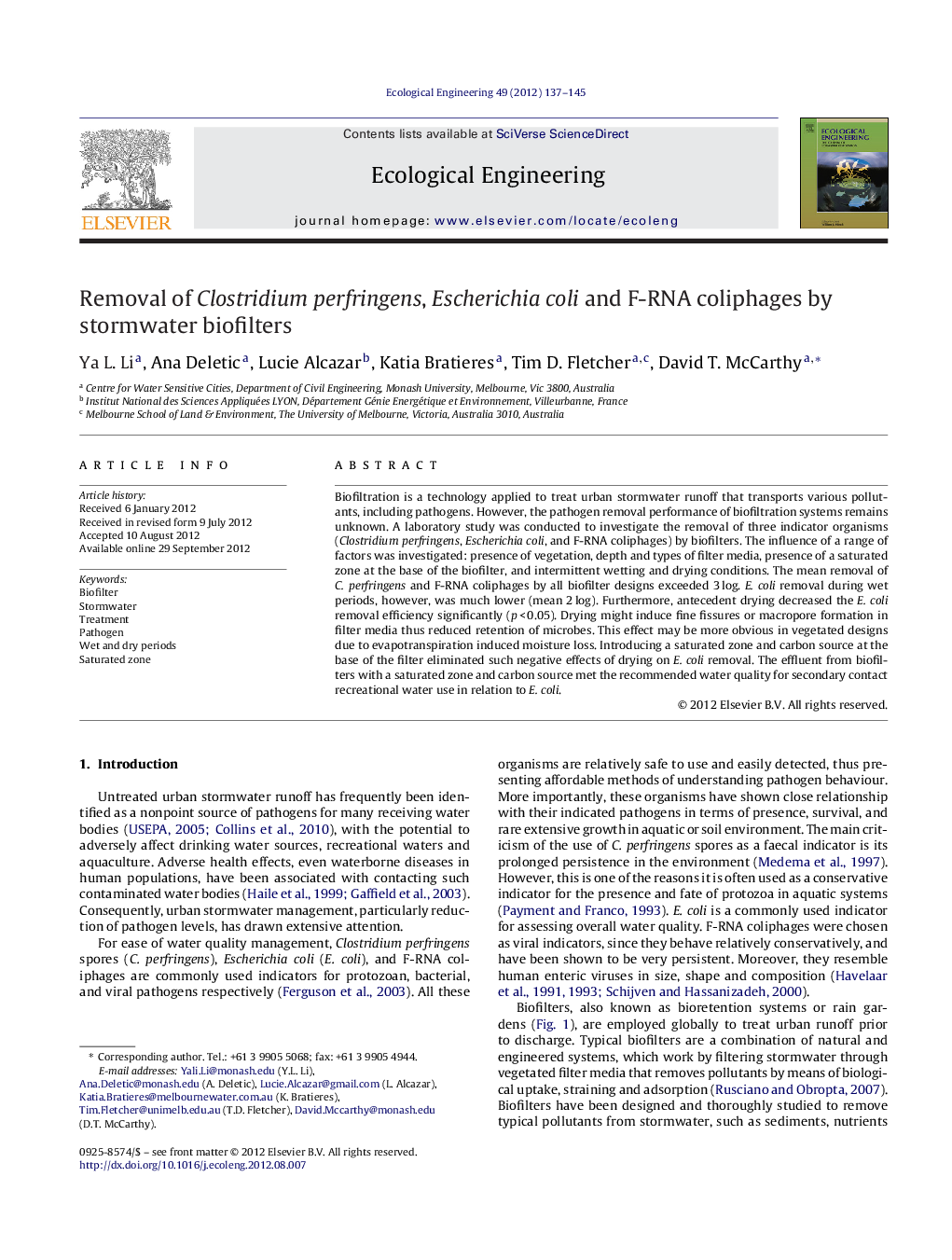| Article ID | Journal | Published Year | Pages | File Type |
|---|---|---|---|---|
| 4389896 | Ecological Engineering | 2012 | 9 Pages |
Biofiltration is a technology applied to treat urban stormwater runoff that transports various pollutants, including pathogens. However, the pathogen removal performance of biofiltration systems remains unknown. A laboratory study was conducted to investigate the removal of three indicator organisms (Clostridium perfringens, Escherichia coli, and F-RNA coliphages) by biofilters. The influence of a range of factors was investigated: presence of vegetation, depth and types of filter media, presence of a saturated zone at the base of the biofilter, and intermittent wetting and drying conditions. The mean removal of C. perfringens and F-RNA coliphages by all biofilter designs exceeded 3 log. E. coli removal during wet periods, however, was much lower (mean 2 log). Furthermore, antecedent drying decreased the E. coli removal efficiency significantly (p < 0.05). Drying might induce fine fissures or macropore formation in filter media thus reduced retention of microbes. This effect may be more obvious in vegetated designs due to evapotranspiration induced moisture loss. Introducing a saturated zone and carbon source at the base of the filter eliminated such negative effects of drying on E. coli removal. The effluent from biofilters with a saturated zone and carbon source met the recommended water quality for secondary contact recreational water use in relation to E. coli.
► Biofilters are promising technology for C. perfringens and F-RNA coliphages removal from urban stormwater. ► Antecedent drying of 2 weeks had a significantly negative impact on E. coli removal. ► The optimal biofilter design for E. coli removal is the presence of a saturated zone and carbon source. ► Effluent E. coli concentrations from the optimal design were below guideline value for recreational water use.
